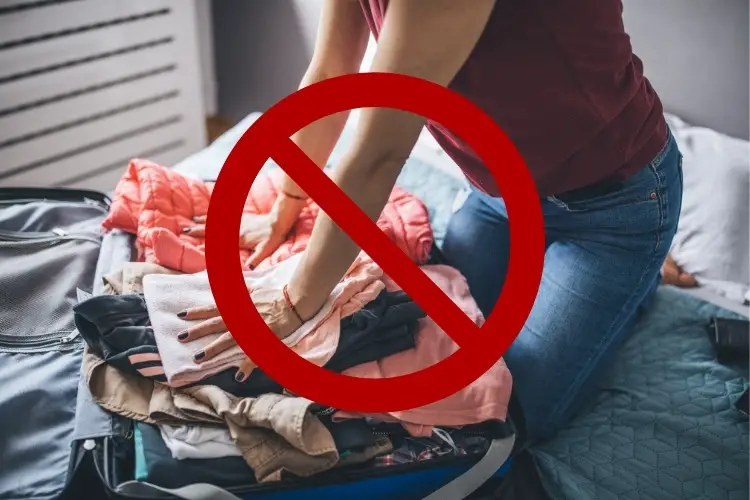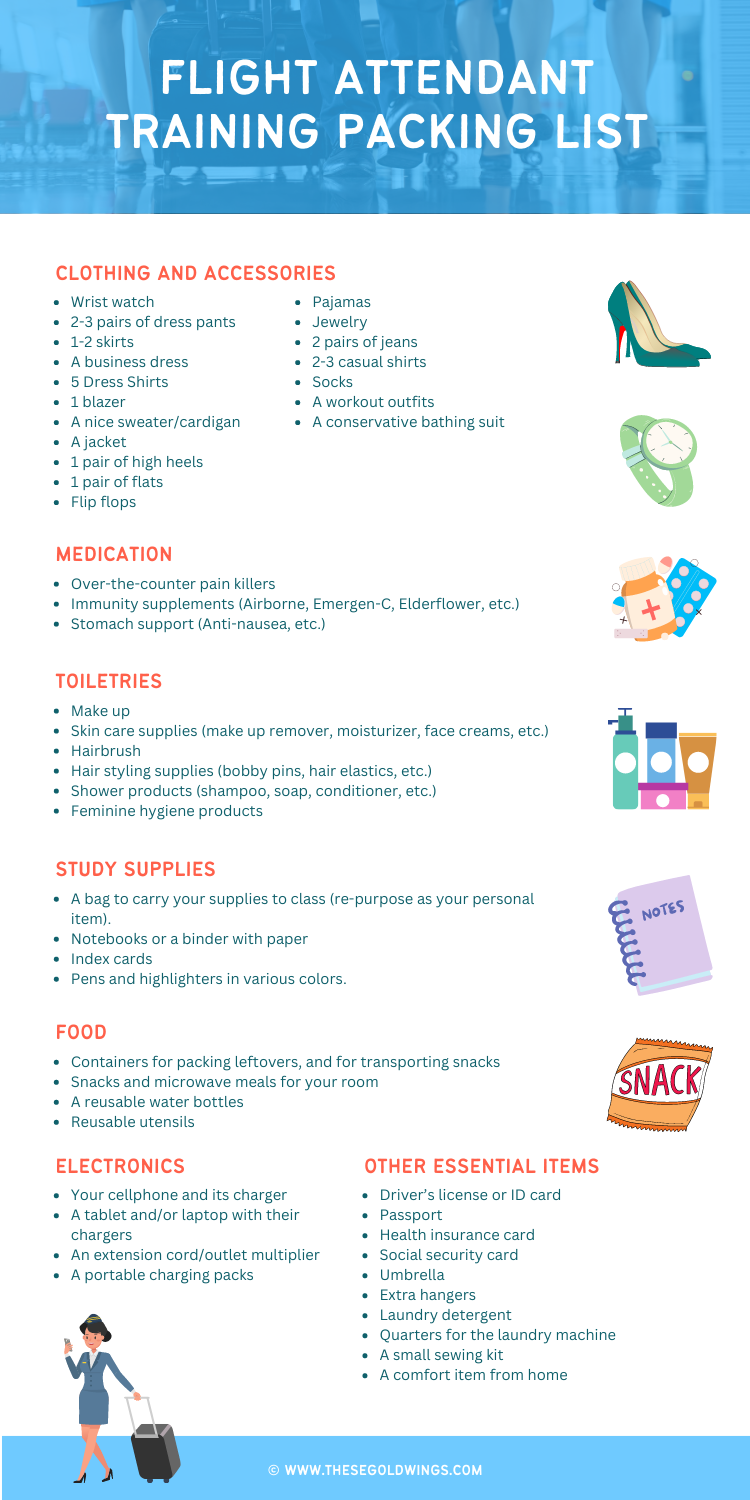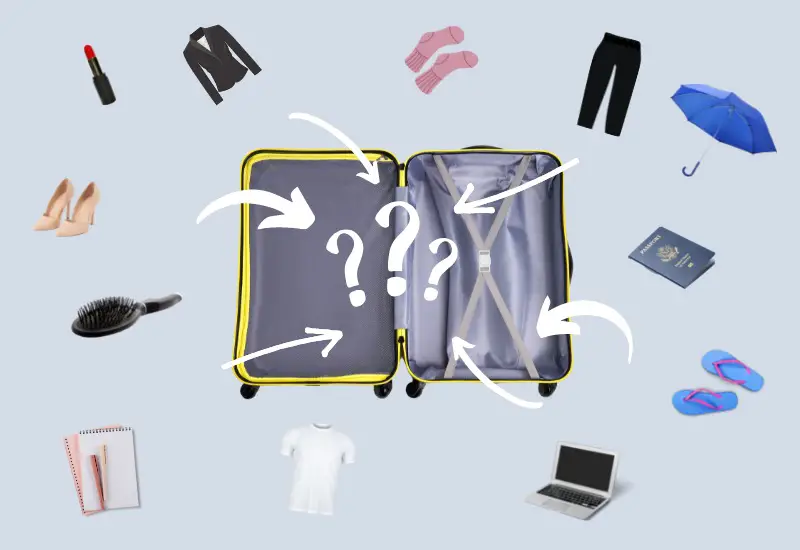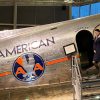You are excited to be headed to training but you have no idea what to pack. After all, it is a two-fold question because deciding what to pack also means deciding what to wear.
Don’t stress! This article is here to help you take the guesswork out of packing for your training program, based on lessons learned by those of us who have gone through training, and come out the other side with a shiny new set of wings!
Tips for Packing for Your Flight Attendant Training
I for one overpacked for my flight attendant training, so the first piece of advice I can give you is: the lighter you pack the better!
A good rule of thumb would be to try to make sure everything fits into one medium-sized checked bag, a roll-a-board, and a personal item.
Read the welcome packet for clues
The welcome packet you receive from your airline will give you a few important clues that will help you pack strategically.
These clues include:
- Length of your training program: Knowing this will help you figure out how much you need to pack.
- Information about the dress code for training: this will tell you what kind of clothing you should pack. Keep in mind, the training process is an extension of your job interview, so you will want to look sharp every day (even when you aren’t going to be in class.)
- Availability of onsite laundry: If laundry is available, pack less!
- Location: Where your training program is located will tell you about the climate, which will inform what season you pack for. It will also let you know if you will be close to stores where you can buy things if needed.
- Luggage allowance: Some airlines dictate exactly how much luggage you are allowed to bring to training. Usually, they will let you check two bags in addition to your carry-on items.
Create a Capsule Wardrobe
A capsule wardrobe is a collection of clothing that can be mixed-and-matched interchangeably.
This system works really well at training because it allows you to combine everything you packed into various outfits.
This way it won’t look like you are repeating outfits.
This will also help you shop for training if, you do not currently in possession of a “work” wardrobe.
There are tons of inspirational guides online, simply search for “business casual capsule wardrobe” and let this guide what you pack to wear at training.
Leave unnecessary things at home

Don’t pack clothing you know you won’t wear, if you haven’t worn it at home, chances are you won’t wear it at training so leave it behind.
This is also a story of what not to wear.
Leave overly casual clothing at home. 👗👢👒🩳
This includes your ripped jeans, shorts, leggings, miniskirts, etc.
They will not give off the professional appearance you need to maintain at training.
Packing List
Here is a suggested packing list that you can follow to help you pack for training.
✅ Clothing and Accessories
Again, if you use the capsule wardrobe idea to guide you, everything in this list should coordinate so you can create outfits out of all of the pieces you bring to training.
We do not recommend bringing more than what is listed here.
- Wrist watch: this is a MUST.
- 2-3 pairs of dress pants: I recommend sticking to solid colors, black, grey, navy, kaki, etc.
- 1-2 skirts
- A business dress: If it has pockets, it will be even more useful.
- 5 Dress Shirts: Remember, business casual!
- 1 blazer: Make sure it matches your pants and skirts.
- A nice sweater/cardigan: It can get cold in the training center.
- A jacket
- 1 pair of high heels
- 1 pair of flats
- Flip flops: for the shower
- Pajamas
- Jewelry: be aware of the jewelry standards of your airline and be sure to match them.
- 2 pairs of jeans: NOT ripped.
- 2-3 casual shirts
- Socks
- A workout outfits
- A conservative bathing suit: You will need to wear it for the water-based training exercises.
Keep in mind that flight attendant training is a highly physically active thing.
You will want to make sure that you can move around, even the business casual clothing you pack. This is especially true for when you will be practicing and testing your evacuation drills, which are pretty physically demanding.
✅ Medications
Training is stressful enough already that you should absolutely make sure you will have access to enough of your regular prescription medications for the entire program.
In the US this might mean calling your insurance company to get a “vacation override.”
Don’t forget the following additional supplements:
- Over-the-counter pain killers
- Immunity supplements (Airborne, Emergen-C, Elderflower, etc.)
- Stomach support (Anti-nausea, etc.)
✅ Toiletries
My advice when packing toiletries is to pack what you know you will use. This is not the time to try out an experimental lipstick shade.
We recommend sticking to the basics:
- Make up
- Skin care supplies (make up remover, moisturizer, face creams, etc.)
- Hairbrush
- Hair styling supplies (bobby pins, hair elastics, etc.)
- Shower products (shampoo, soap, conditioner, etc.)
- Feminine hygiene products
You will likely be able to go shopping while you are at training. It is worth it to Uber to Target for your toiletries if you have the ability to.
It is a relaxing break from the training atmosphere, trust me.
✅ Study Supplies
You are going to training to learn, after all.
So here is what we recommend, but you also know what works for you.
- A bag to carry your supplies to class (re-purpose as your personal item).
- Notebooks or a binder with paper
- Index cards
- Pens and highlighters in various colors.
👉 Pro tip: if you are like me, having fresh, pretty new school supplies helped to make studying fun.
✅ Food
You have to eat, and while some training programs grant you access to a cafeteria, others do not.
Regardless we recommend packing the following food/supplies:
- Containers for packing leftovers, and for transporting snacks
- Snacks and microwave meals for your room
- A reusable water bottles
- Reusable utensils
✅ Electronics
You will need a few devices to help you at training these include the following:
- Your cellphone and its charger
- A tablet and/or laptop with their chargers
- An extension cord/outlet multiplier
- A portable charging packs
✅ Other essential items
There is nothing worse than getting to training and realizing you forgot something vital.
I personally got to training only to realize I had left my social security card on my desk, my parents had to overnight it to me.
Don’t be me, and remember to bring the following essentials with you:
- Driver’s license or ID card
- Passport
- Health insurance card
- Social security card
- Umbrella
- Extra hangers
- Laundry detergent
- Quarters for the laundry machine
- A small sewing kit
- A comfort item from home
Conclusion
Packing for flight attendant training can be a daunting task.
I hope this article has helped give you some inspiration and helped you strategize what to bring with you as you embark on this grand adventure.
I also hope that you will learn from our shoulda-woulda-couldas and have a wonderful time at training, free of any, “man I wish I would have remembered to bring that!” moments.





So how do I apply for cabin crew training
Hi there!
Typically, you’ll want to start by applying to an airline, go through their selection process, and then begin your training once you’ve been accepted. It’s a pretty straightforward journey!